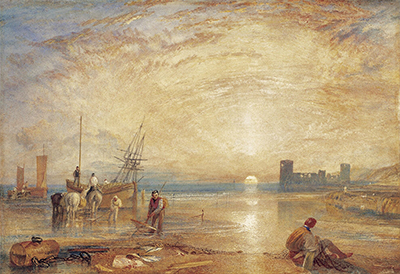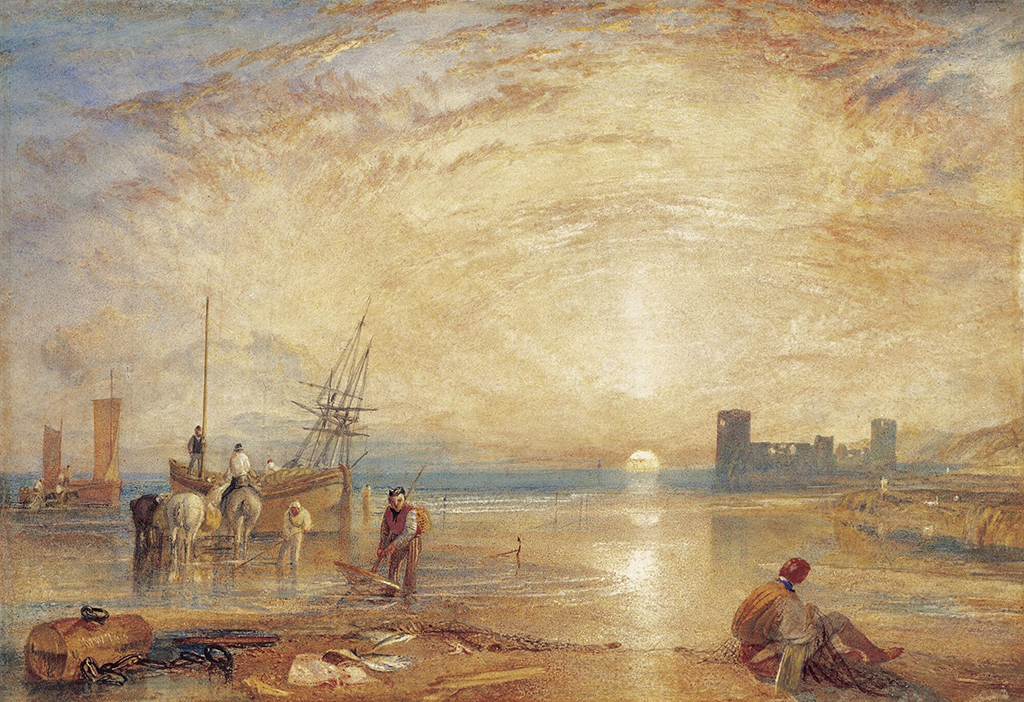This watercolour from the early 1830s captures one of Turner's favourite spots in Wales, and it was recently purchased at auction for the extraordinary price of £541,250.
The artist initially put in strokes of the pencil to lay out the scene before adding tones of watercolour. There are then touches of body colour, which is a medium used to heighten certain parts of a painting, and bring them out a little more. The composition places the castle on the far right, well in the distance and it plays more of a supporting role in this work. We find in the foreground a series of figures who are busily getting on with their tasks for the day, taking items from a fishing boat and returning them to shore. There also other workers from the same industry, a fisherman close to us , and also a number of shrimpers looking to earn their crust for the day.
Turner adored the Welsh landscape, travelling there several times and exploring new regions each time. He found a particular love for the castles and bridges that lied across the principality, and would frequently tackle them within his work from a variety of angles, using both watercolours, oils and pencil. He never tired of this place and was only restricted in later life by his own health, as some of the more rural parts of the UK were not easy to reach back in the 18th and 19th century. The qualities found within paintings such as Flint Castle would serve as inspiration for many who followed, just as Turner himself had appreciated the beautiful scenes of the 17th century French painter, Claude.
Castles appear throughout Turner's career, and he tracked down a huge number of them right across the UK. Their archuitectural beauty, as well as the symbolic atmosphere of power and wealth made them interesting additions, and they would also normally be located in beautiful spots, such as by the sea or straddling an important river. He liked to compare the merits of humanity with that of nature, sometimes pitting them against one another. This piece is more serene, though, and offers a more gentle balance between these two themes, perhaps suggesting that they could live side by side in harmony after all.





